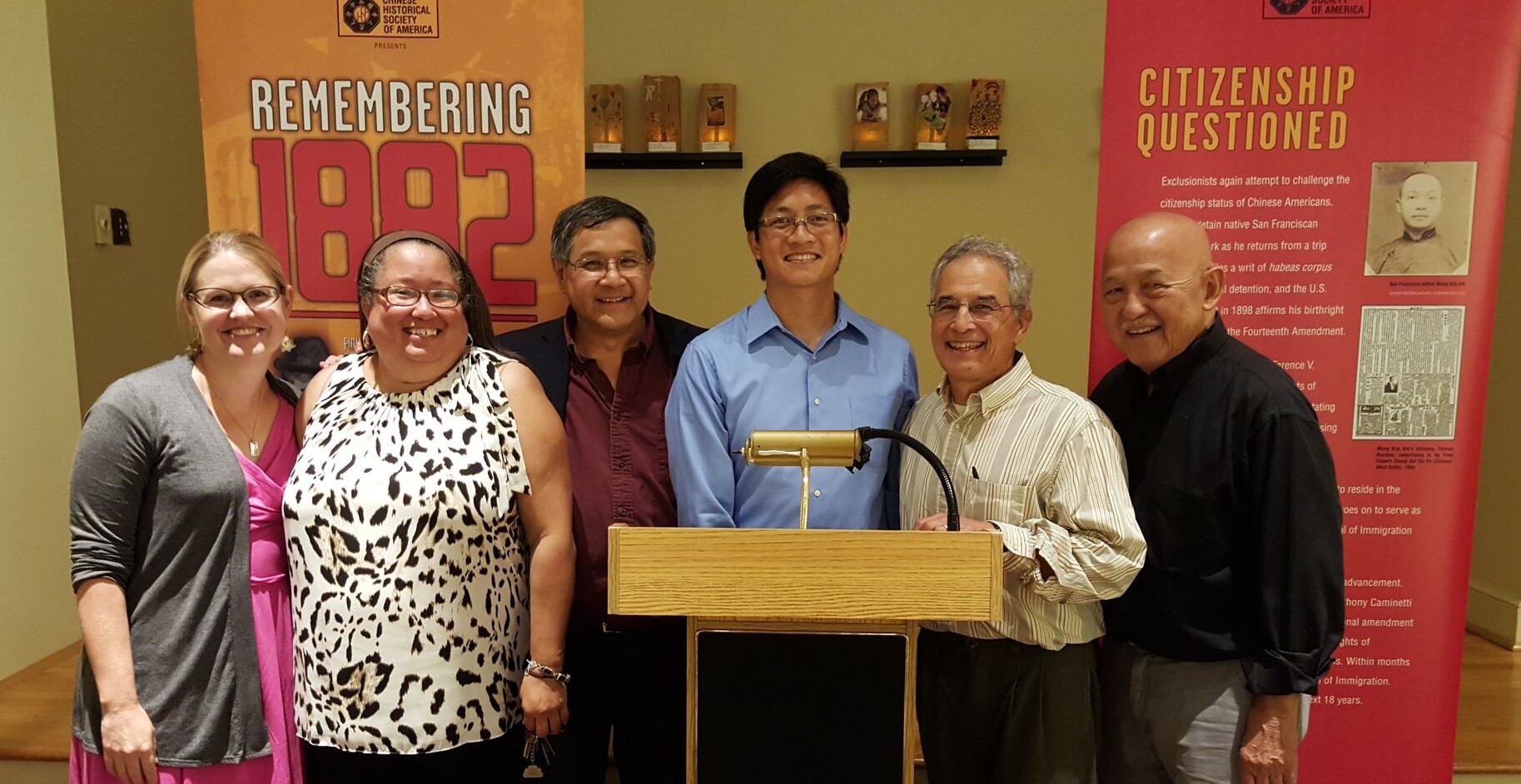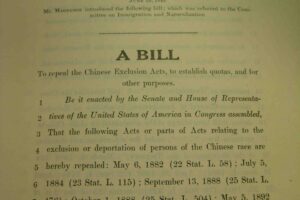Immigration & Civil Rights: 1965 and Beyond – October 1, 2015 event
by Roberta L. Chew
The third in our series commemorating the 50th Anniversary of the 1965 Immigration & Nationality Act and the Civil Rights Movement. Moving from the past to the present, we focused on the civil rights movement of the 1960s, showing clips from three documentary films which depicted aspects of the turbulent social change of the times.
Freedom Rider documents the six-month campaign in 1961 when a group of black and white civil rights activists traveled the south together in a bus, intentionally violating Jim Crow segregation laws. They encountered bitter hatred, beatings, imprisonment, and mob action, which tested their commitment to non-violence.
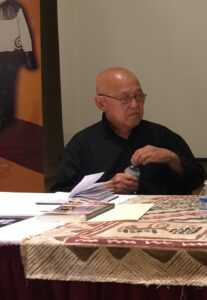
The Loving Story concerns an interracial couple, Richard and Mildred Loving, who were arrested for violating Virginia’s anti-miscegenation laws in the late 1950s. Their case eventually led to a landmark U.S. Supreme Court decision of 1967, which legalized interracial marriage throughout the country.
Through Chinatown’s Eyes: April 1968 examines the impact of the civil disturbances and violence in Washington, D.C., the nation’s capital, in the aftermath of the assassination of the Reverend Martin Luther King, Jr., on D.C.’s Chinatown and its small Chinese community.
A four member panel shared their personal stories of growing up amidst segregation and social change: a Chinese who grew up in the Deep South of the 1940s and 1950s, a biracial Chinese whose family emigrated to the United States after World War II, and two African Americans of different generations who grew up in the historically black Parker Grey neighborhood of Old Town Alexandria.
Stan Lou had a rough time growing up in a small Chinese community in the Deep South in Greenville, Mississippi. His parents ran a grocery store in a black section of town, an area that white grocers did not serve. He was picked on by both blacks and whites. As a youngster, Stan hated being Chinese and couldn’t wait to get out of the South to go to college. Now retired, he is proud of his Chinese heritage and devotes his time and efforts to advancing Chinese American and Asian American causes. Stan discussed how hard Chinese parents worked and sacrificed to help motivate their children to succeed. Despite the effects of the various exclusion laws, Chinese were determined to excel in America.
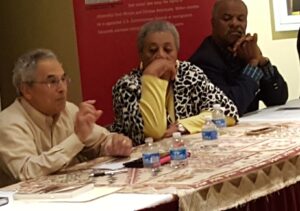
Ting-yi Oei is the son of a Chinese father from the Dutch East Indies (now known as Indonesia) and a Dutch mother. His parents met in the Netherlands during World War II and came to the United States after the war. Ting-yi was their second child, the first to be born in America. Ting-yi grew up in a mainly Jewish neighborhood of a New York suburb trying to figure out his own identity. For 35 years, he was a teacher and school administrator mainly in Northern Virginia; he became the first assistant principal in Fairfax County of Chinese descent. Oei discussed the model minority stereotype which can work against some Asian American students. Those who struggle in school may grow frustrated, act out or be overlooked when teachers (and parents, too) expect all Asian students to do well. Teachers, counselors & administrators alike often fail to recognize the diversity and differences with the Asian American community and tend to see all Asians as alike.
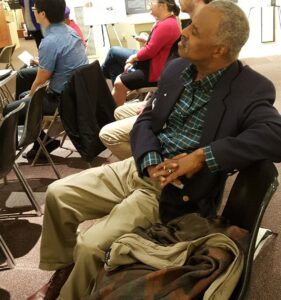
Lillian Patterson with the Alexandria Black History Museum grew up in Alexandria’s historically black Parker-Grey neighborhood in the 1940s and 1950s when blacks were expected to understand the boundaries of the neighborhood and how to behave. There was a lot of parental discipline. Young people accepted it as the way things were when they automatically went to sit at the back of the bus. Desegregation in the Alexandria schools was not easy for black children where some of their teachers did not want to teach them. Her own daughter was in the seventh grade when she informed her parents that her teacher’s attitude was that as long as the student did not start a revolution, she would pass in school whether she had learned anything or not.
MacArthur Myers recounted growing up in the Parker-Grey neighborhood in the 1960s and 1970s. His parents taught him early on right from wrong. He knew where he could or could not go in Alexandria given his skin color. Movie theaters in Alexandria were segregated until the 1970s. He could spend all day at the Copper theater, but couldn’t go to the Richmond or Reed theater. He benefited as a youth by having black adult men in his life who put themselves on the moral line, whether it meant they would lose their jobs or be ostracized. Reverend Patterson had helped train him to pass the junior lifeguard test once the public swimming pool was integrated. While at T.C. Williams High School, they asked for a black studies class and wanted a black Miss T.C. He belonged to a group of young black and white high schoolers who got together to discuss human kindness and world problems. He later became an Alexandria civic leader and is on the Board of Directors of the Alexandria Black History Museum. Post Under Events: Chinese in the South and in the Confederacy

